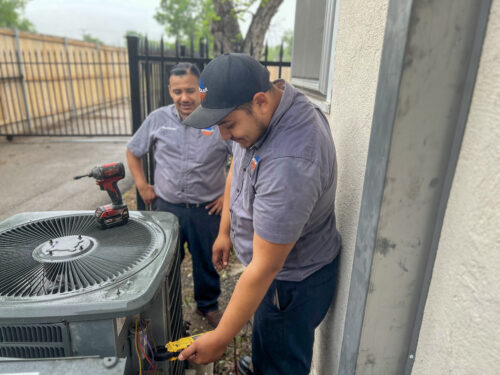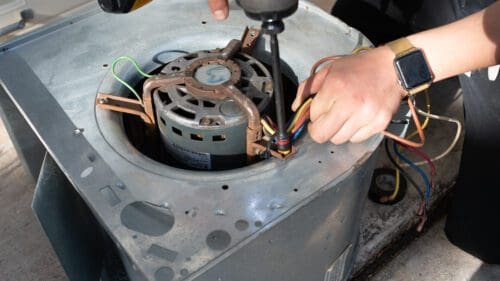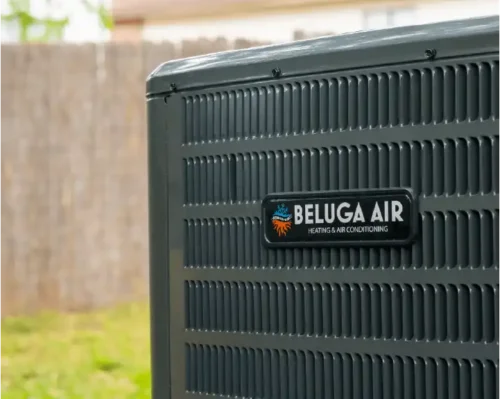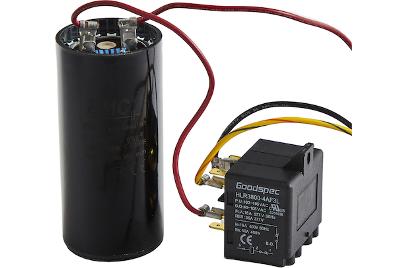Introduction
Welcome to the world of HVAC safety and the pivotal role played by the Safety Float Switch. This comprehensive guide is crafted to enlighten homeowners on the nuances of one of the most critical yet often overlooked components of their air conditioning systems. Understanding the mechanics and applications of these switches is not just about technical know-how—it’s a matter of safeguarding your home from potential water damage and maintaining optimal system performance.
As we delve into the details, you’ll gain insights into the functions and uses of AC float switches, equipped with the knowledge to ensure your HVAC system operates seamlessly. We’ll cover the ins and outs, from basic operation principles to the steps for detecting clogs and preventing overflows. Stay tuned as we navigate through the intricacies of HVAC safety float switches, a vital topic for any homeowner keen on maintaining a comfortable and secure living environment.
What is an AC Float Switch?
An AC Float Switch, often referred to as a safety switch or overflow switch, is a critical component in maintaining the integrity of an HVAC system. This little sentinel stands guard over your air conditioning unit, ensuring that water damage is thwarted before it has a chance to wreak havoc on your home. It’s a component that many may not even know exists, yet it plays a pivotal role in preserving the health of both the HVAC system and the domestic environment.
At its core, the function of a Safety Float Switch is elegantly straightforward. It monitors the water level in the condensate drain pan, the place where moisture from the air conditioning process is collected. The switch is set to detect any abnormal rise in water level within the pan, typically a result of clogged drains or a failure in the condensate pumps. When the water reaches a certain height, the float switch activates, and the system responds accordingly to prevent an overflow.
How Does an AC Float Switch Work?
The workings of a float switch might remind one of a buoy bobbing on the waves. As the water level in the secondary drain pan rises, so does the float. When it hits a designated high water mark—a level that signals impending trouble—the switch triggers and sends a signal. This signal is often a direct command to shut off the air conditioning unit, nipping the potential for water damage in the bud.
The Unsung Hero of HVAC Safety
Its role might be discreet, and its appearance unassuming, but the importance of a float switch in an HVAC system cannot be overstated. Without it, condensate overflow could lead to expensive water damage, mold growth, or even compromise the structural integrity of the entire system. It is, in every sense, the unsung hero of HVAC safety.
Different Names, Same Protective Purpose
- Condensate safety switches
- Overflow prevention devices
- Water leak detectors
- Flood water sensors
- Shut-off switches for HVAC systems
Irrespective of the nomenclature, the role remains unchanged: to guard against any water-related incidents that can lead to damage within your home.
Location and Installation
Typically, an AC Float Switch is installed in the drain pan or sometimes attached directly to the drain line. Installation should always be carried out by a qualified HVAC technician to ensure accuracy and compliance with local regulations and safety standards. A properly installed float switch can mean the difference between a smoothly running HVAC system and a catastrophic water damage event.
Understanding the function and importance of the AC Float Switch is imperative for homeowners looking to maintain their HVAC systems efficiently. While the switch itself may not require frequent interaction, its existence is vital for the safe operation of your air conditioning unit, making it a key player in the overall health and performance of your AC system.
Troubleshooting Common Issues with HVAC Safety Float Switches
Troubleshooting your HVAC safety float switch is crucial for maintaining an efficient air conditioning system and preventing any water damage. Common issues with float switches typically involve clogged drains or faulty switches. Regular maintenance can help avoid these problems, but should you encounter them, here’s how you can approach troubleshooting:
- Check for Pan Overflow: Inspect the drain pan beneath your unit; if it’s full of water, this could indicate a clogged drain line. A full secondary drain pan can trigger your float switch and shut down the system to prevent water overflow.
- Inspect the Switch: Examine the switch device for any visible damage or disconnections. If your AC unit isn’t turning on, a tripped float switch could be the culprit.
- Clean the Drain Lines: Clear any blockages in the condensate drain lines using a wet/dry vacuum or a special cleaning solution recommended by a qualified HVAC technician. A clear path for condensation is key to preventing pan overflow.
- Test the Float Switch: Gently lift the float to see if it activates the switch. If there is no response, the switch may need replacement.
If troubleshooting doesn’t resolve the issues, it’s time to call in a professional HVAC technician. They can provide reliable service and repair for your HVAC system, ensuring your float switch operates correctly to safeguard against condensate overflow protection.
Conclusion
In the intricate dance of maintaining a healthy and efficient home environment, the AC Float Switch emerges as a silent sentinel against potential water damage. This unsung hero in the pantheon of HVAC safeguarding plays a pivotal role, ensuring your air conditioning system remains dry and damage-free. Today, we’ve journeyed through the nuts and bolts of what makes the AC float switch an indispensable component of your HVAC system.
By now, you should understand that this trusty device, sometimes called a safety switch or an overflow switch, is more than a mere accessory; it’s a valiant protector of the serene domestic life from the chaos of a clogged drain scenario. We’ve navigated the waters of troubleshooting common hitches, emphasizing that prevention through regular maintenance is better than any cure.
In the spirit of safeguarding your serenity and your wallet, equipping your home with an AC float switch is not just smart; it’s a strategic move to preserve both your system and your peace of mind. Remember, while the DIY spirit is commendable, the complexities of float switch installation and maintenance are best left to the deft hands of a qualified HVAC technician. Safe guarding your home is an ongoing mission, and the AC float switch is your trusted ally.











